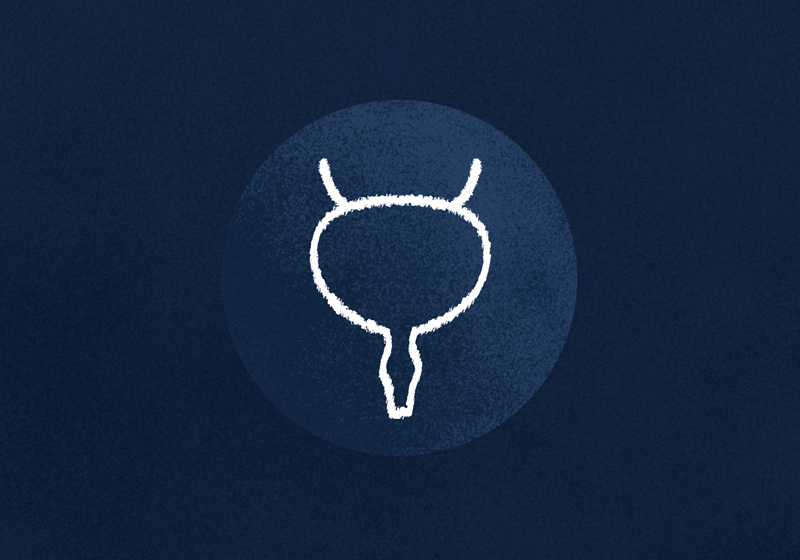Urethral catheter following radical prostatectomy

What is a catheter?
A catheter is a thin, flexible tube inserted into the bladder through the urethra to assist with draining urine. It remains in place temporarily for 7-10 days after surgery, allowing the join between the bladder and urethra to heal.
What types of drainage bags are needed?
There are two primary types of drainage bags for indwelling urethral catheters: leg bags and bedside drainage (overnight) bags. The choice of drainage bag will depend on your specific needs and lifestyle. You will likely need to interchange between the two.
- Leg bags: These smaller bags are designed to be worn discretely on the leg (calf or thigh). They are suitable for daytime use and are easily concealed under clothing. Leg bags typically have a smaller capacity (500ml) and should be emptied regularly.
- Bedside drainage bags: These larger bags are intended for resting or sleeping. They have a greater holding capacity and are equipped with a longer tube to facilitate drainage into a collection container. Bedside drainage bags are not designed to be portable and should be kept below the level of the bladder to ensure proper drainage.
How do you empty the bag?
To empty the drainage bag, follow these steps:
- Wash your hands thoroughly with soap and water.
- Position the container below the level of the bag’s outlet to allow gravity drainage.
- Open the drainage valve or clamp on the bag, directing the urine into the toilet.
- Once the bag is empty, close the drainage valve or reclamp the bag securely.
- Clean the outlet of the drainage bag with a wipe or disinfectant, if necessary.
- Rewash your hands with soap and water.Remember to empty your leg bag regularly to prevent discomfort and ensure proper urine flow.
Hygiene
Proper hygiene is crucial in catheter care to prevent infections. Here are some guidelines to follow:
- Wash your hands thoroughly with soap and water before and after handling the catheter or drainage system.
- Cleanse the urethral opening and surrounding area daily with mild soap and water. Gently pat dry with a clean towel.
- Avoid using powders, creams, or lotions near the catheter insertion site unless specified by the treating team.
- Maintain regular bathing or showering, ensuring the catheter and surrounding area are kept clean and dry.
- Always ensure the foreskin is returned to its normal position.
- Avoid pulling or tugging on the catheter. Ensure the tubing is not kinked or twisted, as this can disrupt urine flow.
Fluid intake
Maintaining an adequate fluid intake is essential for urinary health. Here are some tips:
- Aim to drink plenty of fluids throughout the day unless otherwise advised by the doctor.
- Water is generally the best choice for hydration. Avoid excessive caffeine, alcohol, and sugary beverages, as they may irritate the bladder.
- Spread your fluid intake evenly throughout the day rather than consuming large volumes quickly.
Troubleshooting
Occasionally, issues may arise while managing your catheter. Here are some troubleshooting tips for everyday concerns:
- If the catheter becomes blocked or there is limited urine flow, try changing your position, such as standing or sitting, to improve the flow.
- Ensure the tubing is not kinked or twisted. Straighten any kinks or loops to allow proper urine drainage.
- Contact our nurses for further evaluation if you experience discomfort or pain.
- There may be leaking around the catheter from the tip of the penis, usually due to bladder spasms which can be expected.
- If there is blood within the catheter, this may be normal, but please contact the office for further direction.
- If the catheter accidentally gets pulled out, seek immediate medical attention.